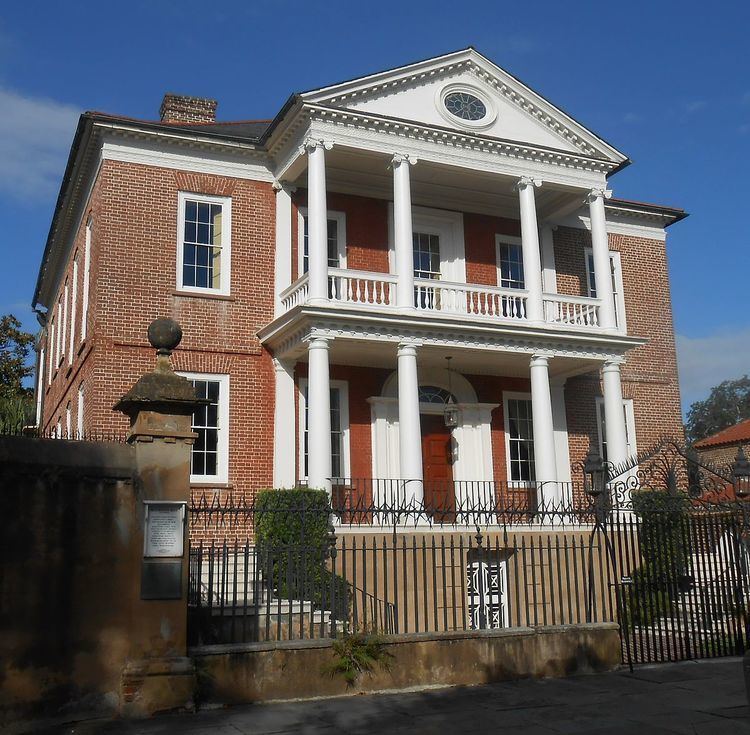Built 1765 Designated NHL October 9, 1960 Opened 1765 | NRHP Reference # 66000699 Designated NHLDCP October 9, 1960 Area 8,000 m² Added to NRHP 15 October 1966 | |
 | ||
Address 27 King St, Charleston, SC 29401, USA Similar Robert Brewton House, Colonel John Stuart House, Simmons‑Edwards House, Heyward‑Washington House, William Gibbes House | ||
The Miles Brewton House is a National Historic Landmark residential complex located at 27 King Street in Charleston, South Carolina, USA. It is one of the finest examples of a double house (a reference to the arrangement of four main rooms per floor) in Charleston, designed on principles articulated by Andrea Palladio. Its extensive collection of dependencies makes it one of the most complete Georgian townhouse complexes in America. The house was built ca. 1769 for Miles Brewton. The Brewton House was the headquarters of BG Alexander Schimmelfennig during the federal occupation of Charleston at the end of the American Civil War. It was declared a National Historic Landmark in 1960.
Description and history
The Miles Brewton House is set on the west side of King Street near the southern tip of the Charleston peninsula. The 2-acre (0.81 ha) property is ringed by walls topped with iron fencing; the wall is lower at the front, with an iron gate leading into a courtyard area flanked on the sides (north and south) by brick walls, and on the west by the main house. The house is a two-story brick structure, set on a high stone basement, with marble steps flanking a projecting Classical two-story porch on either side. The porch is supported by columns (Doric on the first floor, Ionic on the second), and is topped by a fully pedimented and dentillated gable. The interior is richly finished in wood, plaster, and marble.
On the north side of the house is what is referred to locally as a "plantation lane", along which the property's outbuildings are located. These include period slave quarters, a kitchen, and a pavilion, all joined by an arcade. The garden space directly behind the house retains its basic 18th-century layout.
